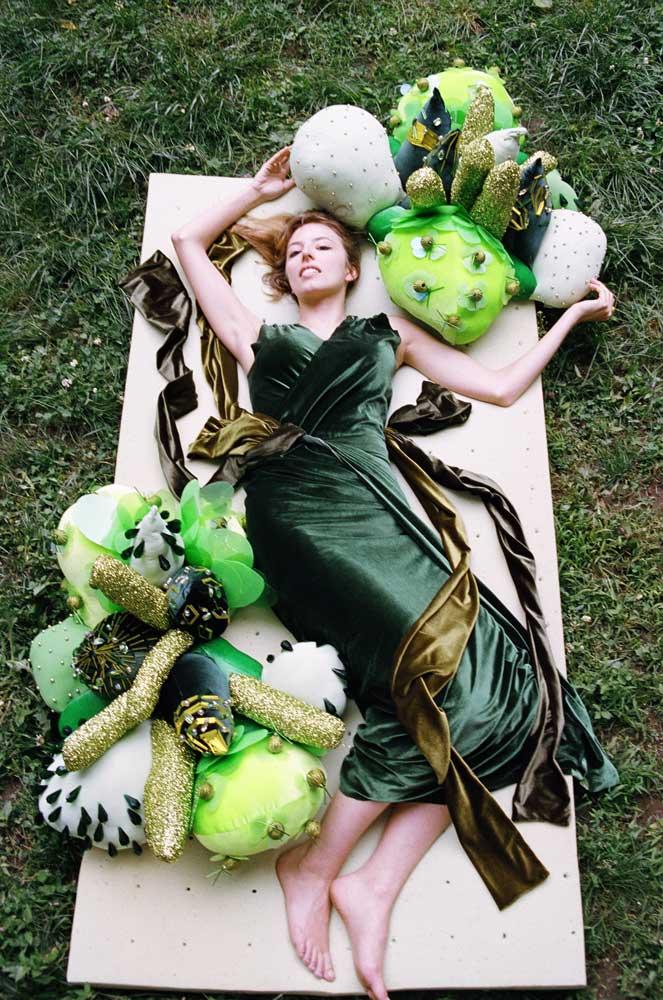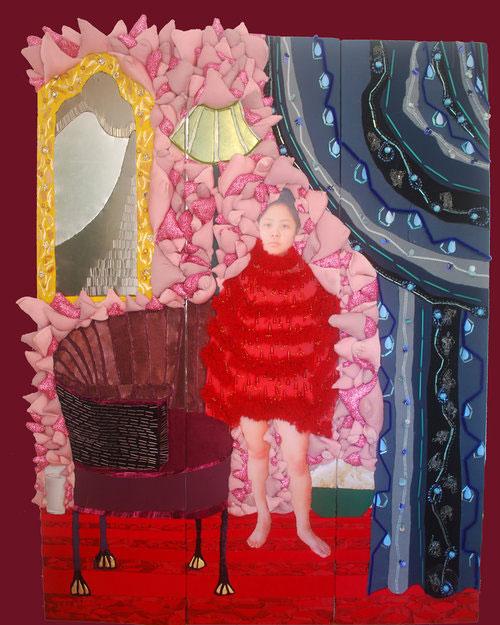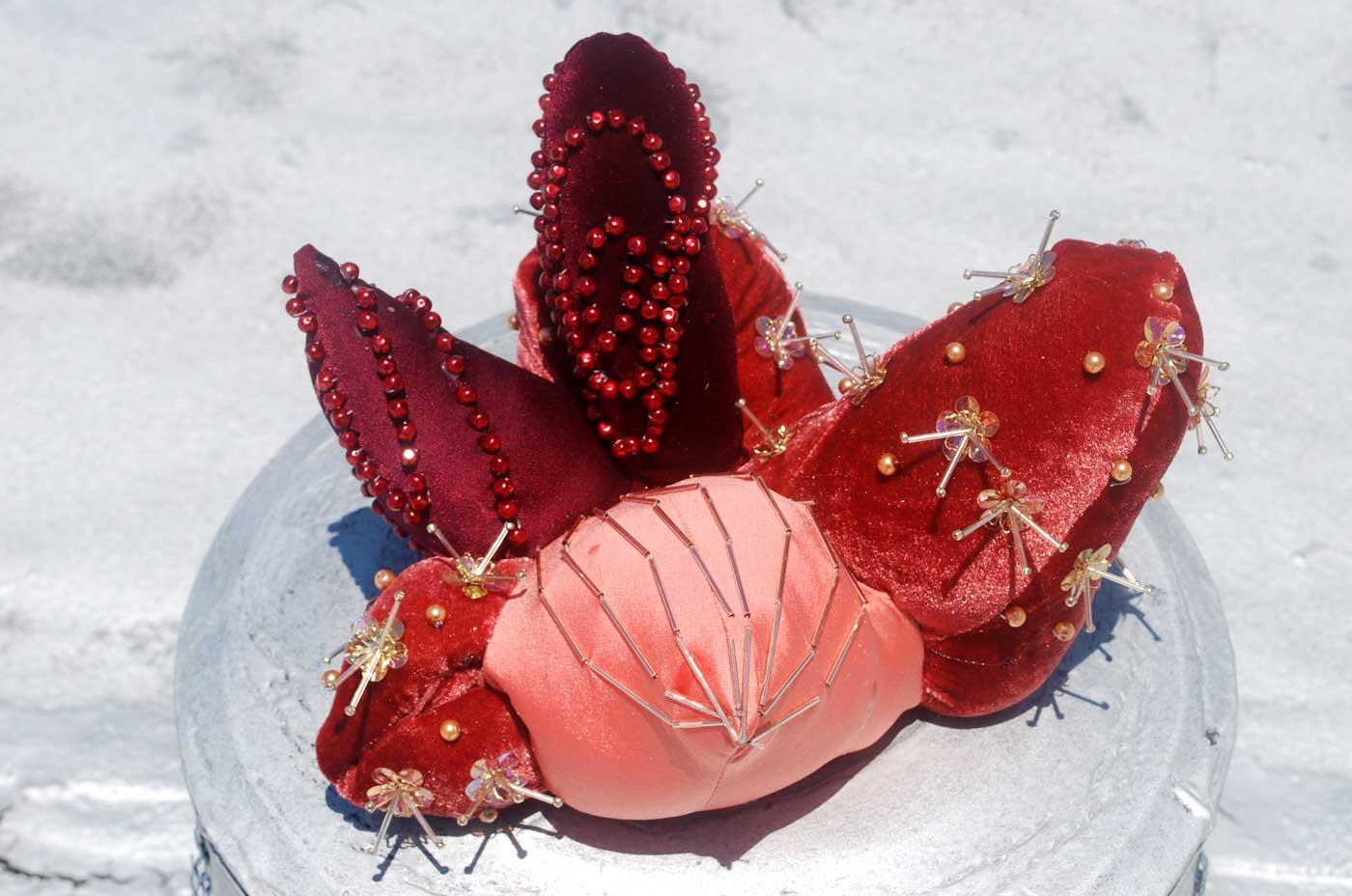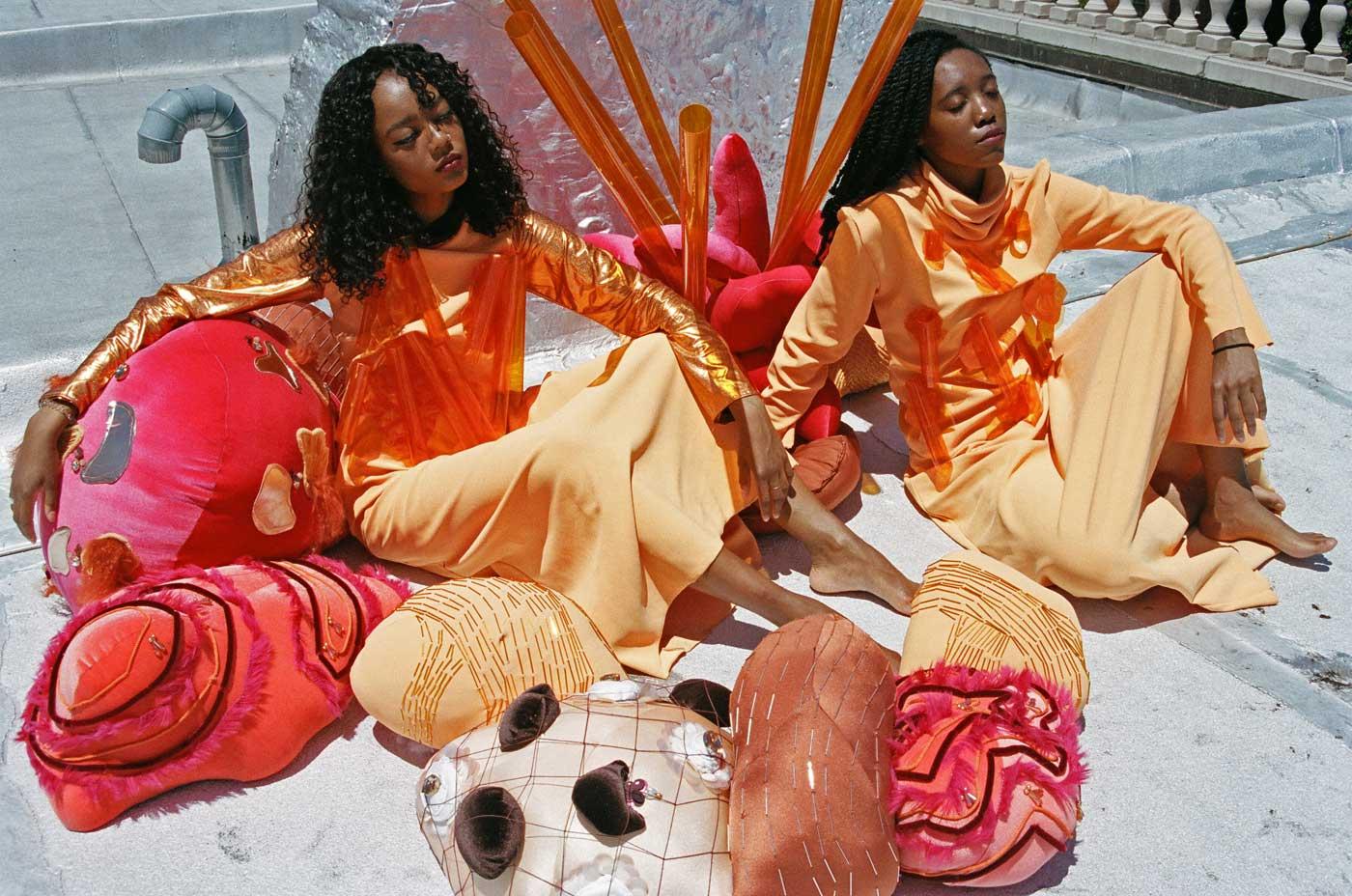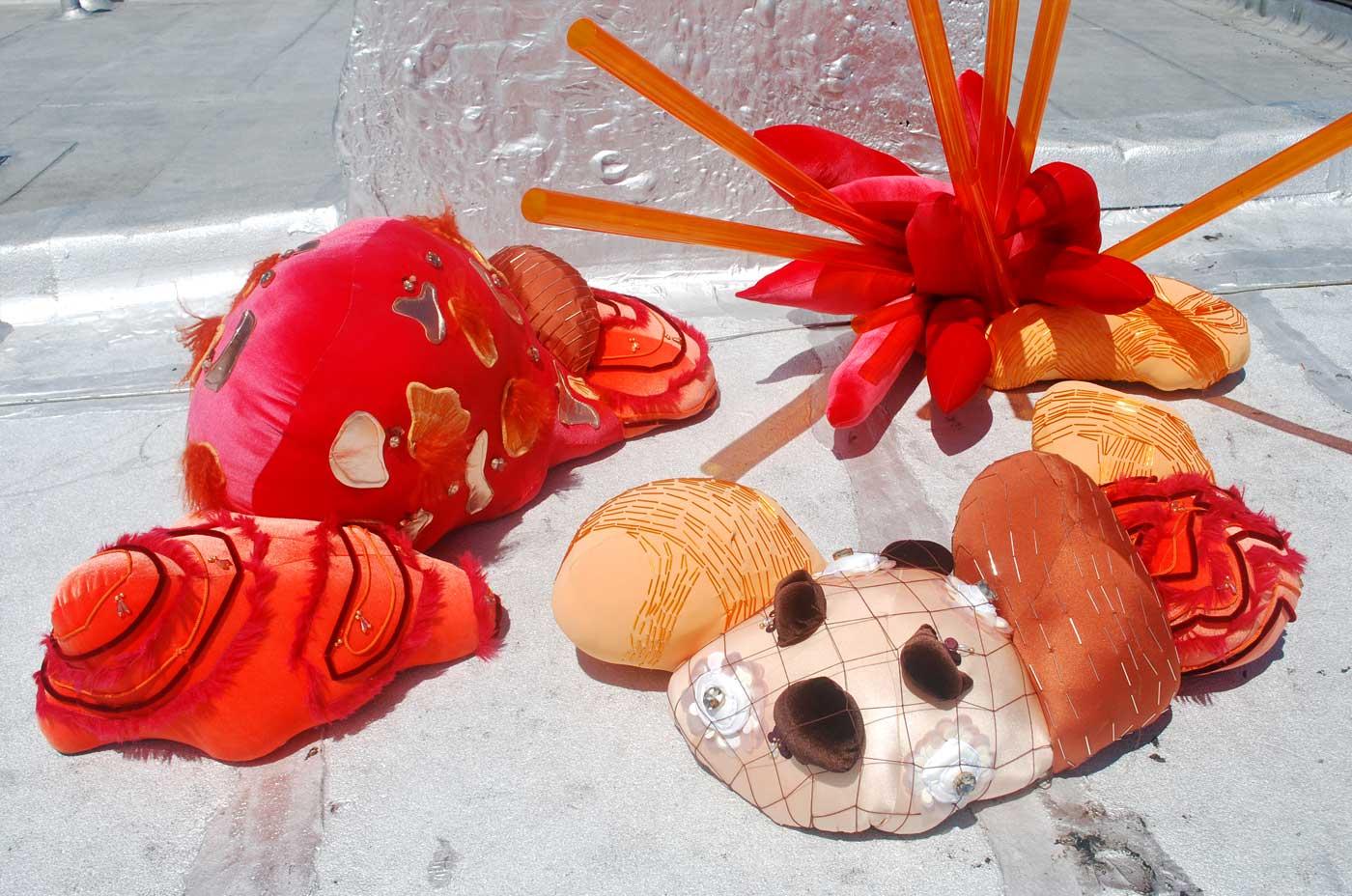“I am no Eva Hesse, but I had an Eva Hesse moment,” begins Allison Morgan, showing me a series of soft sculptures that she refers to as Cash Cow. Crafted in various warm shades and textures of knit fabrics and covered in beads, Cash Cow feels like an otherworldly crustacean, rendered in extravagant detail. “I walked into a store on Canal looking for vinyl and came out with nine orange tubes instead,” she says, pointing to several, protruding orange stems. Eva Hesse “would just grab really random materials and make crazy forms with them so I was trying to channel her a bit.”
This is the kind of wondrous, star-crossed story that Morgan often doles out, mystically told, providentially referential to female artists across history. Her pieces, which range from enormous, paneled portraits to succulent-sized sculptures, seem to take on lives of their own, while reflecting profoundly on the lives that we have.
Morgan’s upcoming show, Fodder, at The Living Gallery (June 26-27; Bushwick) grapples with themes inherent to Cash Cow: female representation, costume, feminine labor techniques, the worth of women’s art, concepts that have long been essential to the her own work. At age 24, Morgan—even as she experiments—has a remarkably clear vision and voice. She graduated from the Brown and Rhode Island School of Design dual degree program in 2016, with majors in Apparel Design, Art History, and French and a dedication to honoring traditionally dismissed “women’s tasks,” like embellishment. Now Brooklyn-based (but soon, LA-bound), Morgan has shifted her focus from apparel design to the visual arts. Fodder reveals a cohesive series of beaded, fiber-based soft sculptures and photographic portraits, fueled by Morgan’s design experience and a desire to examine art history and the female experience.





